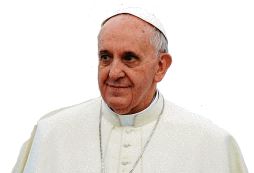Share
|BOOK REVIEW: Fr. Michael White and Tom Corcoran, Tools for Rebuilding: 75 Really, Really Practical Ways to Make Your Parish Better (Ave Maria Press, 2013).
|BOOK REVIEW: Fr. Michael White and Tom Corcoran, Tools for Rebuilding: 75 Really, Really Practical Ways to Make Your Parish Better (Ave Maria Press, 2013).
In this follow up book to the extremely popular Rebuilt, Fr. Michael White and Tom
Corcoran offer a series of 75 practical ideas for building a better
Parish. These ideas are given in 14
different categories and are geared towards evangelization and Church growth. Many of the topics do overlap with the
previous book, but my overall impression is that it is a very helpful book.
In his recent Apostolic Exhortation, Evangelii
Gaudium, Pope Francis
notes that many of the baptized faithful “lack a sense of belonging to the
Church” and that this may be due to “certain structures and the occasionally
unwelcoming atmosphere of some of our parishes and communities, or to a
bureaucratic way of dealing with problems” or “a concentration on administering
the sacraments apart from other forms of evangelization” (EG 63).
This new work by Fr. Michael White and Tom Corcoran, should
be approached from this perspective. In
my opinion the goal is not to ‘clone’ or duplicate the experience at Fr.
White’s Nativity parish but to seek to live out, in our own unique parishes, a
“missionary impulse capable of transforming everything, so that the Church’s
customs, ways of doing things, times and schedules, language and structures can
be suitably channeled for the evangelization of today’s world rather than for
her self-preservation” (EG 27).
With this focus Tools for Rebuilding contains a wealth
of ideas for reflecting on the life of our own parish in the light of Pope
Francis’ call to evangelization. In the
first section on ‘strategic tools’ the authors talk about evaluating schedules
and setting boundaries in ministry, establishing a mission, vision and
strategies for ministry, clearly defining evangelization, working as a team,
the importance of gratitude and enthusiasm, and pursuing excellence. Under the heading “building tools” the authors
discuss the need to set boundaries on the use of parish facilities, the need
for the parish to be welcoming and accessible, the need to maintain a clean and
inviting space, with a minimum of clutter.
The authors also talk about the
importance of minimizing distractions with such things as mobile phones, but
even go further with aggressive announcements regarding the use of “crying
rooms” for small children and even volunteers who “politely but firmly” ask
parents of noisy or unruly children to relocate out of the main sanctuary! In my opinion the attempt to justify this
through an appeal to St Paul’s letter to the Corinthians is unwarranted.
The next section involves “office
tools.” They authors point out that being busy is not the same as being
relevant, they suggest that structuring the workspace to promote collaborative team
work is best, and that we should hire those who are willing to humbly do small
tasks themselves.
Under the heading “communication
tools” they suggest that the parish becomes more focused in its advertising,
and that it invests in a well thought out website that is relevant, updated
weekly, a destination for visitors and parishioners. The authors suggest that the parish name and
“brand” all of its programs to make them more attractive and
understandable. They also suggest that
the parish become known to the community and that the parish get to know your
community, especially who is not at
Church. Repeating a sentiment from their first work the authors suggest that
“vestments are like golf clubs.” If the
focus is on bring in the lost, then the cost of beautiful and expensive “church
stuff is a turn-off for many, if not most, unchurched people” (p. 93). This opinion is far from a universal opinion
in Catholic tradition and even seems difficult to reconcile with Proposition 20
“The New Evangelization and the Way of Beauty” from the recent Synod on the New
Evangelization which notes that “Beauty should always be a special dimension of
the New Evangelization” (Prop. 20). Pope
Francis notes, “Every form of catechesis would do well to attend to the ‘way of
beauty’ (via pulchritudinis)” (EG 167, quoting Prop. 20). In the final thoughts on this section
they highlight making ministry accessible, easy and part of parish
culture. The goal is every member a
minister.
The next major section is titled
“Weekend Tools.” The first piece of
advice is to have a team of enthusiastic greeters welcome everyone who comes in
the door. The second very predicable
piece of advice is the assertion that because you are in the communication
business the “most important capital investment you can possibly make in your
church is a sound system” (p. 102).
Thirdly, the authors urge that parishes invest prayerfully, financially and thoughtfully
in music. The authors then ask, without
compromising the proper reverence due to the Mass and observing the normal
“good pacing, measured pauses, moments of silence and solemnity” of the Mass is
there anything distracting or unusually slow taking place? Linked to this is a reflection on the
sometimes jarring effect of transitions and announcements. Next the authors discuss the process of change
which they are aiming for in the weekend liturgy. They are seeking to invite people in, to
transport them on a journey and then to help them reach a destination—deeper
relationship with Christ. The next piece
of advice involves being aware of the secular seasons that the neighboring
community is involved in and trying to link these sentiments to the liturgical
seasons.
The next major section entitled
“Preaching Tools.” The first piece of
advice is that the homily and the pulpit announcement must have a focused and
consistent message. Next they advise
that the parish commit to having the same message all weekend long, and that
the pastor make the homily a greater priority. They also suggest that a clear
distinction be made between insiders and outsiders in the parish. Insiders
should be challenged, outsiders should be comforted. They also recommend that the pastor preach
the important announcements giving them the added weight of the authority and
power of the pulpit.
The next section involves
“Sacramental Tools.” The authors assert
that “the opportunity give to us at Baptisms” . . . is “not for instruction and
catechesis” . . . but for “celebration.”
They should have a warm welcoming experience. They suggest not calling it a ‘class’ and
developing a Baptism ministry team who help make the experience personal,
beautiful and joyful. In regard to the reception
of First Holy Communion the authors suggest that we not create a barrier to the
Sacrament by imposing all kinds of requirements on families. Punishment and reward don’t lead to
discipleship. Likewise Confirmation
should be an initiation not a graduation.
They recommend keeping youth ministry apart from Confirmation and not
attaching difficult requirements to the Sacrament. Some advice to increase the Sacrament of
Reconciliation involves preaching on it, making it accessible, and encouraging
children’s participation in it. They
also give advice on making the Sacrament of the Anointing of the Sick move
accessible. The next point warns about
what they call “self-righteous super consumers” (SRSC). This was a group of dissatisfied, grumpy,
self-righteous people who contributed nothing but demanded everything. The authors suggest setting proper boundaries
and firmly opposing them. There is also a
lengthy point about pastoral problems related to Mass intentions. In order to stop consumerism, Nativity Parish
first stopped announcing Mass intentions and then stopped accepting personal
intentions at all. All Masses are
offered “for the people.” With regard to funerals, the authors suggest recruiting
volunteers to help families, and that the pastor set firm boundaries and beware
of consumers while still being aware of special situations.
The next major section deals with
children’s ministry. The authors recommend having a safe full service nursery on
Sundays and a Liturgy of the Word for children.
They also recommend that the CCD/PSR program be set up so that it
doesn’t look like a ‘school.’ The
program should be content rich but fun. The authors propose a small group model
where the leaders foster relationship with Jesus and with one another. With teens they suggest that we treat students
as adults by “acting as if they really desire to know God—even if they don’t”
(p. 184). They should be challenged to
get into small groups which cultivate authentic conversations which challenge
them to grow. They should also be given
opportunities to serve.
The next section deals with “Money
Tools.” They note that in parish setting
“fundraisers always create sideways energy that casts parishioners in the role
of consumers and puts the focus on raising cash rather than growing disciples”
(p. 190). They suggest gradually
stopping all fundraisers and focusing only on the offertory. You should stop doing what doesn’t get
funded. They also suggest that parishes
“pass the basket as seldom as possible” (p. 193). In this same manner they suggest giving
generously to the poor out of the parish collection and sealing the “poor
boxes.” Rather than letters of appeal
from the pastor or pledge campaigns, the authors suggest serious modeling and
teaching on stewardship. One small
quibble with the authors is their appeal to an alleged biblical model of
“tithing” which is not a New Covenant ideal or a part of Catholic Tradition. In
their parish, appeals for money are done very well only once per year, but
stewardship is part of the vision of the parish. In keeping with our modern culture they
authors suggest setting up accounts to allow regular envelope users to give by
electronic fund transfer, and set up the parish website to receive gifts. They even suggest a giving “kiosk” in the
lobby that allows parishioners to swipe there card on their way out of Mass (p.
207). They also suggest that the parish be responsible and transparent with the
use of the funds donated.
The next section is titled
“Staffing Tools.” The authors warn about
over-using volunteers and about the danger of some heavily used volunteers
gaining an unhealthy sense of entitlement.
They suggest constantly using new volunteers as often as possible.
Following best practices in business they suggest that we “get the wrong person
off the bus. “ When we recognize that someone is a bad fit for a ministry we
need to gracefully get them off the bus.
We should also be patient when we are hiring. They suggest looking for character,
competency and chemistry (p. 218). Linked to this is the idea that we should be
on the lookout for talented people and promote them. They believe that as we promote talent to our
team more talent will be attracted. They suggest scheduling the staff around
the weekend, so that the weekend is the big event. They also emphasize that
leaders must be learners who are constantly reading and reflecting on their
task.
In the next section entitled,
“Critical Tools.” The authors warn that
whatever you do you will experience comment, criticism and complaint. Some tools for dealing with conflict include
beginning with prayer, communicating with appropriate diocesan leadership
(especially the bishop) and neighboring pastors about the transition and change
you are planning and finally exercising the appropriate damage control. On this point the authors warn that if you
attempt to promote change you will inevitably receive very stereotyped letters
of complaint by those who do not like change.
We can always learn from criticism but we shouldn’t let this criticism
stifle our vision. We should not be
upset when the “wrong people”-- angry, hurtful, critical, dramatic people leave
the parish because they won’t follow our vision. Sadly sometimes even the “right” people will
leave because their friends and family don’t like us. As leaders we also need
to be willing to admit our mistakes. The
author note “beside what you actually get wrong you might have to apologize for
what you get right” (p. 244). We may
have hurt people unintentionally, overlooked someone, or failed to provide what
someone needed. We also need to be
humble and to exercise forgiveness and to move on.
The next section of the book is
entitled, “Fun Tools.” We need to celebrate successes by first of all defining
what success is in our ministry, then by sharing these successes and
celebrating them with our staff. We must
emphasize that any success is a team effort.
Reward success by thanking people personally and publically. Also thank your staff privately. The authors also emphasize the importance of
“fun.” They suggest that we should laugh
at ourselves, and create a fun environment.
In their final section the authors
discuss, “Overall Tools.” The first point is that the pastor needs to be
careful not to dominate and to delegate responsibility. Pastors need to model submission to
authority. “Be an authority by
submitting yourself to it.” (p. 275).Change takes time. You need to be discerning about which new
projects you take on and to be patient and positive about the pace of
change. There are no silver
bullets. The challenges we face require
consistent approaches, focused intensity and time (p. 280). We need to seek wise counsel in various ways
to improve our leadership by choosing wise advisors and looking for specific
skills and points of view. The authors
advocate doing something in a smaller way as a trial and then doing it in a
bigger way. Start somewhere, brainstorm
and give yourself permission to fail (p. 290).
We need to focus on the hearts of individual people (p. 291) and stop
trying to make people go to church, but instead make church matter (p. 294).
Review © Scott McKellar 2013
Related articles
- Pope Francis: A Dream of Missionary Renewal (Evangelii Gaudium Review Part 1)(newhitherthitherandyon.wordpress.com)
- Book review: Rebuilt: Awakening the Faithful, Reaching the lost, Making Church Matter, by Fr. Michael White and Tom Corcoran (Ave Maria Press: 2013)(newhitherthitherandyon.wordpress.com)



